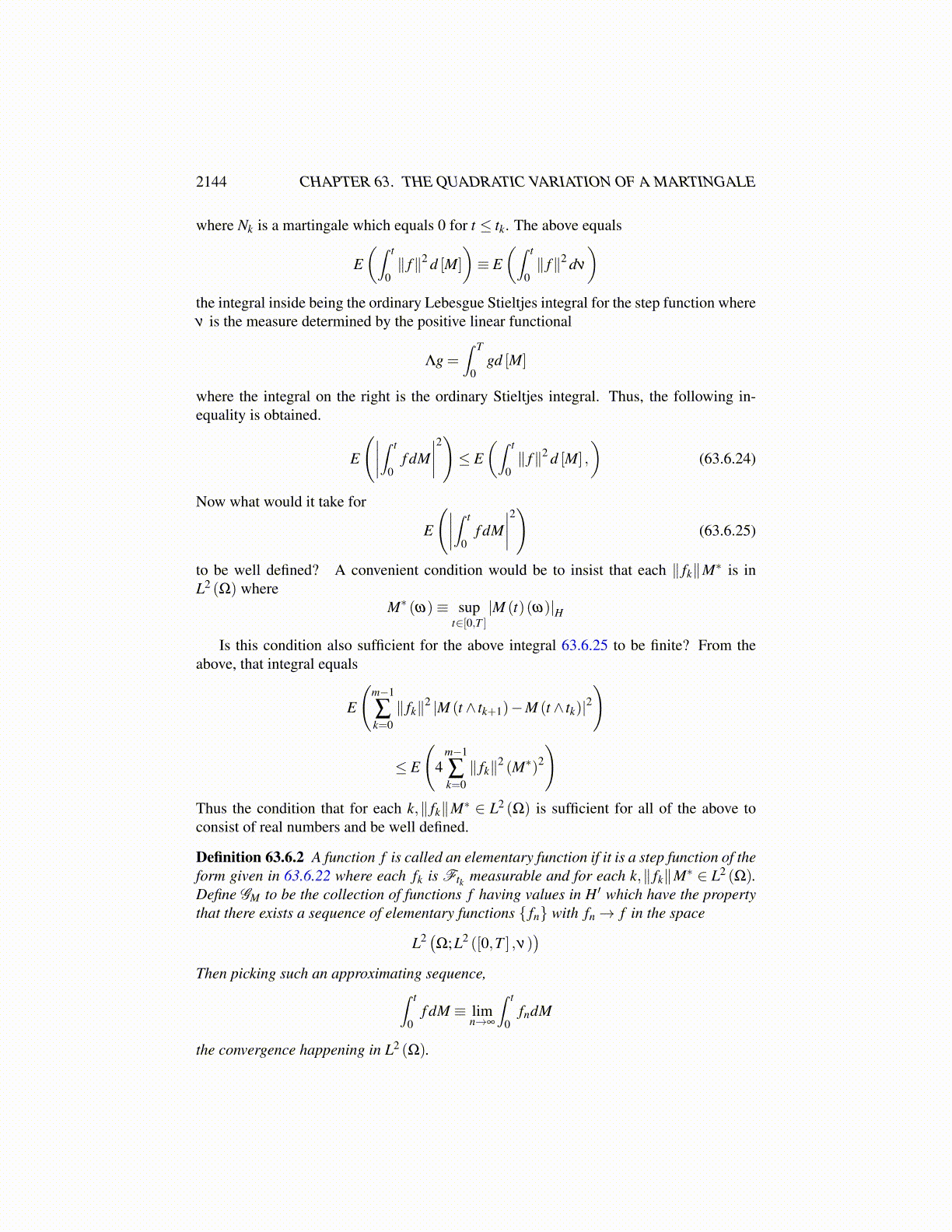
2144 CHAPTER 63. THE QUADRATIC VARIATION OF A MARTINGALE
It suffices to verify 63.5.20. Let { fn} and {gn} be sequences of elementary functionsconverging to f and g in GM ∩GN . By Lemma 63.5.2,
E((∫ t
0fndM,
∫ t
0gndN
)U
)=∫
Ω
∫ t
0fngnd [M,N]
Then by the Holder inequality and the above definition,
limn→∞
E((∫ t
0fndM,
∫ t
0gndN
)U
)= E
((∫ t
0f dM,
∫ t
0gdN
)U
)Consider the right side which equals
14
∫Ω
∫ t
0fngnd [M+N]dP− 1
4
∫Ω
∫ t
0fngnd [M−N]dP
Now from Lemma 63.5.4,∣∣∣∣∫Ω
∫ t
0fngnd [M+N]dP−
∫Ω
∫ t
0f gd [M+N]dP
∣∣∣∣=
∣∣∣∣∫Ω
∫ t
0fngndνM+NdP−
∫Ω
∫ t
0f gdνM+NdP
∣∣∣∣≤ 2
(∫Ω
∫ t
0| fngn− f g|dνMdP+
∫Ω
∫ t
0| fngn− f g|dνNdP
)and by the choice of the fn and gn, these both converge to 0. Similar considerations applyto ∣∣∣∣∫
Ω
∫ t
0fngnd [M−N]dP−
∫Ω
∫ t
0f gd [M−N]dP
∣∣∣∣and show
limn→∞
∫Ω
∫ t
0fngnd [M,N] =
∫Ω
∫ t
0f gd [M,N]
63.6 Another Limit For Quadratic VariationThe problem to consider first is to define an integral∫ t
0f dM
where f has values in H ′ and M is a continuous martingale having values in H. For thesake of simplicity assume M (0) = 0. The process of definition is the same as before. Firstconsider an elementary function
f (t)≡m−1
∑k=0
fkX(tk,tk+1] (t) (63.6.22)
where fk is measurable into H ′ with respect to Ftk . Then define∫ t
0f dM ≡
m−1
∑k=0
fk (M (t ∧ tk+1)−M (t ∧ tk)) ∈ R (63.6.23)